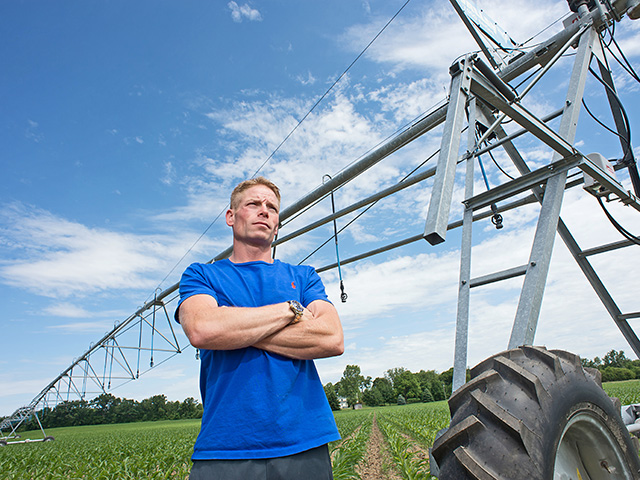This yearlong endeavor looks at how four farmers are evaluating technology and agronomic information that can boost the productivity of their operations.

Scottish poet Robert Burns wrote that the "… best laid schemes of mice and men … " don"t always go as planned. David Kay knows the truth of those words. It"s why his cropping plans are designed to allow for the vagaries of Mother Nature. While he is ready to take actions based on the plans, he also is ready to react to what comes.
"When we did our planning, the long-term weather forecasts were for a dry and hot summer," Kay notes. "We didn"t go with drought-tolerant hybrids, but we did get the corn in the ground before rains came, hoping to capture moisture in the soil profile."
Kay also changed his irrigation plans this season. Usually, his center pivots swing into action a couple of weeks prior to tassel. This year, he started early when the corn was about chest high.
"Most of our pivots can only do about an inch or two a week," Kay says. "Starting early lets us start to fill the soil profile, so later in the season, we aren"t starting at empty."
While Kay and his father-in-law, Rick Knierim, look for the best genetics on all their acres, the hybrids with the highest potential go on the 30% that is irrigated. Not only does the yield opportunity justify more careful soil testing and nutrient management, by default, that 39% tends to get a little more attention. "More attention" is a relative term for Kay, given the farming operation"s preference for growing conventional corn.
"Cost savings in seed have been the driving force behind conventional corn, but we find a lot of conventionals outyield traits in the same hybrid," Kay says. "We never got away from conventional corn, which means we need to pay more attention and scout more."
Jonathan Harfst, BASF Innovation Specialist, credits conventional corn with keeping Kay and Knierim in tune with insect management. "They run a strong program of in-furrow applications and then come back when necessary (with treatment)," Harfst says. "They are very cognizant of threshold levels and react when it is economically important."
"Most years, insect pressure isn"t an issue," Kay says. "We stay diligent scouting and make sure we don"t need to spray. We may have a little pressure here or there, but normally not above the economic threshold."
Scouting is especially important when it comes to disease pressure. In irrigated corn, disease pressure is almost a given. Even with forecasts of a hot, dry summer, Kay knew his irrigated corn would be at risk. After good results with a pretassel application of Priaxor in 2015, the fungicide was integrated into his 2016 plan.
"We"ve tried other fungicides in the past without much luck," Kay says. "Priaxor works."
"They saw 20-bushel yield increases across the farm with an application prior to tassel," Harfst notes. "With the mild (2015) winter and heavy disease pressure seen last summer, David locked in product for a good price in January through our early-order program, Planning Advantage."
Having some Priaxor in the chemical barn preseason or in the field in-season doesn"t affect Kay"s scouting plans. "The combination of southern Michigan heat and humidity means we have to be diligent in our scouting for disease," he says. "We expect to see some Northern corn leaf blight, and in the past, we"ve seen rust in corn. We"ll scout as much as we can, even though if we see something, it may be too late to act. It is still good to be out there looking to be sure we haven"t missed something."
The farm isn"t missing anything on the marketing side, either, where a different form of scouting and evaluations are ongoing. "We can do all the work irrigating and protecting the crop, but it can all be lost with poor marketing," Kay says. "We"re paying careful attention to what"s going on in South America, as well as weather reports for the central Corn Belt to see if the early forecasts pan out."
Kay"s wife, Lisa, has handled marketing responsibilities since leaving a career at ADM in early 2015. The change has been win-win for everyone, Kay notes. "She has more time to spend with the family, and it has been an absolute change in our marketing."
He explains that his wife is better managing risk and hedging with incremental sales than either he or his father-in-law. In many ways, her marketing style parallels his own agronomic style.
"She is able to shake the marketing tree a bit and say, "Let"s do this a little differently," " he says. "I try to shake things up in the field, manage risk and try to do things there a little differently.